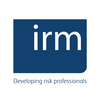In the ever-evolving landscape of business, resilience is not just a desirable trait; it's a strategic imperative. The ability to navigate uncertainties, mitigate potential risks, and respond effectively to challenges defines the roadmap to resilience. This exploration aims to guide businesses in mastering the risk management process, providing a foundation for confident and resilient decision-making.
1. Understanding the Risk Landscape:
Identification of Risks:
-
The first step in the risk management process is the identification of potential risks. This involves a comprehensive analysis of internal and external factors that could impact the achievement of business objectives. Risks can range from operational and financial to strategic and compliance-related.
Categorization of Risks:
-
Once identified, risks are categorized based on their nature and potential impact. Common categories include financial risks, operational risks, strategic risks, compliance risks, and reputational risks. Categorization aids in developing targeted risk management strategies.
2. Risk Assessment and Analysis:
Quantitative and Qualitative Analysis:
-
Risk assessment involves both quantitative and qualitative analysis. Quantitative analysis assigns numerical values to risks, allowing for a more precise evaluation of their potential impact and probability. Qualitative analysis provides a deeper understanding of the nature and context of risks.
Impact and Probability Assessment:
-
Risks are assessed based on their potential impact and probability of occurrence. This assessment helps prioritize risks, focusing attention on those with the highest likelihood and the greatest potential impact. It lays the foundation for effective risk mitigation strategies.
3. Developing Risk Mitigation Strategies:
Risk Mitigation Plans:
-
Armed with a clear understanding of identified risks, businesses develop risk mitigation plans. These plans outline specific strategies and actions to reduce the likelihood or impact of identified risks. Mitigation strategies may involve process improvements, contingency planning, or the implementation of safeguards.
Diversification and Hedging:
-
In certain cases, businesses may employ diversification or hedging strategies to mitigate risks. Diversification involves spreading investments or operations across different areas to reduce exposure to a single risk. Hedging involves using financial instruments to offset potential losses.
4. Risk Monitoring and Surveillance:
Continuous Monitoring:
-
Risk management is not a one-time activity; it's an ongoing process. Businesses establish systems for continuous monitoring of identified risks. This involves regular evaluations, updates to risk assessments, and adjustments to mitigation strategies based on changing circumstances.
Early Warning Systems:
-
Implementing early warning systems is crucial for proactive risk management. These systems involve the use of key performance indicators (KPIs) and triggers that signal potential deviations from expected outcomes. Early detection allows businesses to intervene before risks escalate.
5. Crisis Response and Contingency Planning:
Emergency Response Protocols:
-
Even with robust risk management, unforeseen events can occur. Businesses develop emergency response protocols to guide actions in the face of crises. These protocols outline roles, responsibilities, and procedures to be followed to minimize the impact of a crisis.
Business Continuity Planning:
-
Business continuity planning is an integral part of risk management. It involves developing strategies to ensure that essential business functions can continue in the event of a disruption. This includes having backup systems, alternate locations, and communication plans.
6. Post-Incident Evaluation and Learning:
Post-Mortem Analysis:
-
Following the occurrence of a significant risk event, businesses conduct post-mortem analyses. This involves a thorough examination of the event, its causes, and the effectiveness of the implemented risk mitigation strategies. Lessons learned contribute to continuous improvement.
Iterative Risk Management:
-
The risk management process is iterative. Insights gained from post-incident evaluations feed back into the risk identification and assessment phase, allowing businesses to adapt and enhance their risk management strategies over time.
7. Embracing a Risk-Aware Culture:
Cultural Integration:
-
Beyond processes and protocols, fostering a risk-aware culture is fundamental to resilience. This involves instilling a mindset where all members of the organization understand and contribute to risk management. Open communication and a willingness to identify and address risks are central to a risk-aware culture.
Training and Education:
-
Training and education programs ensure that employees at all levels are equipped to understand and respond to risks. This includes providing them with the tools to identify potential risks in their areas of responsibility and empowering them to contribute to risk mitigation efforts.
Conclusion: Mastering the Art of Resilience
The roadmap to resilience is paved with a robust risk management process. From understanding the risk landscape to developing mitigation strategies, continuous monitoring, and fostering a risk-aware culture, businesses can navigate uncertainties with confidence. The art of resilience lies not only in reacting effectively to challenges but in proactively identifying, assessing, and mitigating risks before they escalate. By mastering the risk management process, businesses not only protect themselves from potential threats but also position themselves to thrive in an ever-changing business environment.

No comments yet